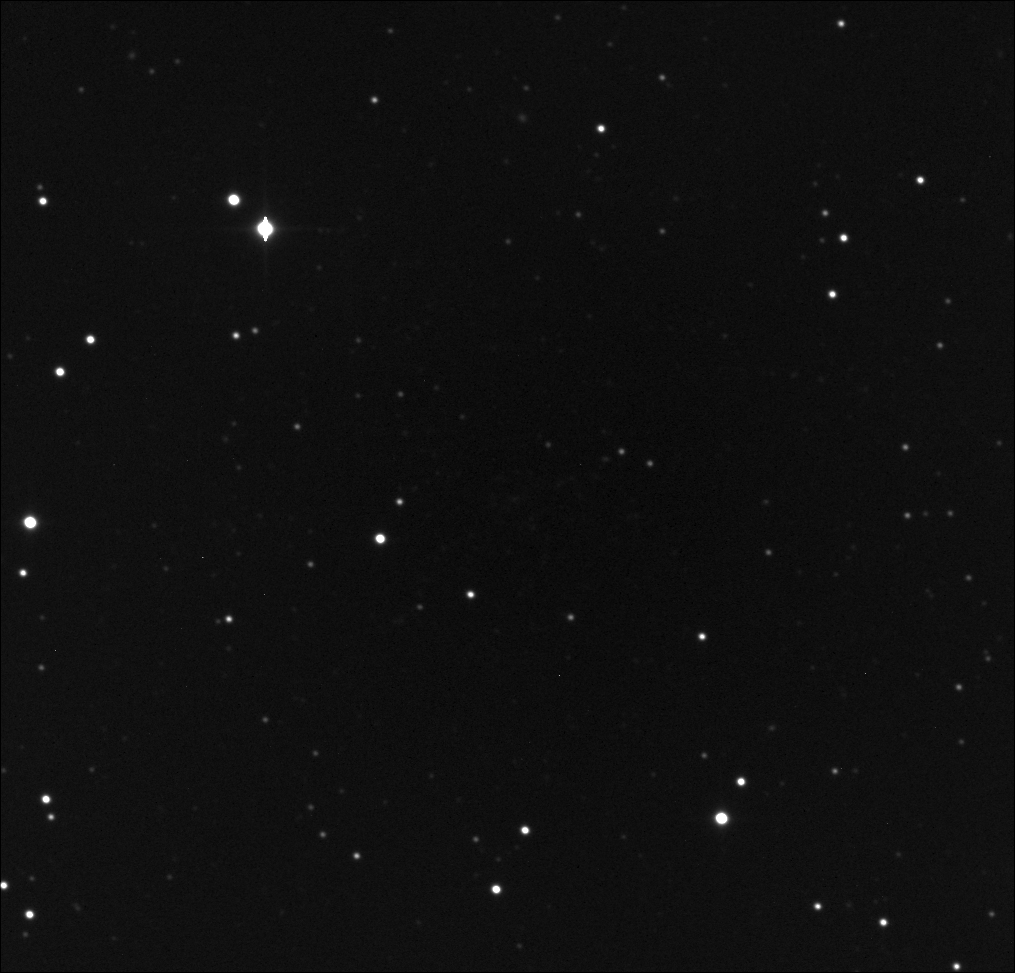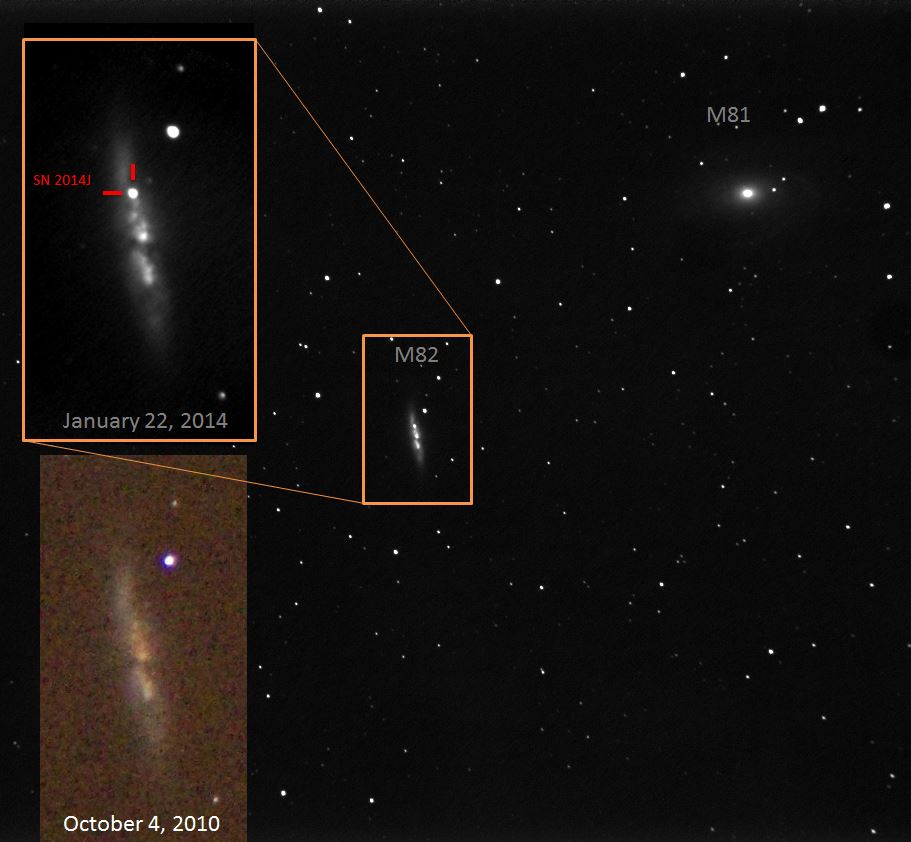Carleton University Astronomy Picture Contest (Spring 2014 edition)
Thursday, June 12, 2014
The first edition of the Carleton University Astronomy Picture Contest (Spring 2014 edition) had two entries.
The first one is by Graham Cree. It's a picture of M100, the Blowdryer Galaxy (bring your mouse over the image for annotated version).

You can see no less than 11 galaxies in the image.
The second entry was from Callan Jessiman. He performed the very challenging task to image gravitational lensing. He tried to image the MACS J1206 galaxy cluster. Here's the final image

The important features are not the bright stars around but the very very dim fluffy features in the very centre. You can see a youtube video of the location and how small and deep the field of view is here: https://www.youtube.com/watch?v=9fNlS_tzBm4 . The Hubble space telescope has a nice view of it located at: http://hubblesite.org/newscenter/archive/releases/2011/25/image/b/format/web_print/
The central lensing galaxy barely visible in this images has a redshift of z=0.44, while some of the background dimmer galaxies visible on this image have redshifts down to z=0.47, which means that the blue light emitted is seen as red light on Earth. The distance to these galaxies is roughly 5 billion light years.
See the second version for a comparsion between this picture (zoomed in) and Hubble's picture here: http://www.astrobin.com/185974/B/
Both are winner this year, so congratulations to Graham and Callan!
Supernova SN 2014J
Wednesday, January 22, 2014
In mid-January, a supernova exploded in the Cigar Galaxy (M82). Despite the terrible cold (-25 C), I decided to try to image it with our CCD camera. With a bit of patience and luck I was able to acquire a few good images of it, the day after it was discovered. I composed this image.

The large field background image was taken with the 98mm refractor (f=618mm) exposing for about 200 seconds. The insert at the top left shows a picture taken with our 14" telescope (f=3910mm) with two red lines to highlight the supernova, which is obvious. The lower brownish insert is a picture that I took with my 110mm telescope (f=770mm) in 2010, does not showing the supernova. In the background image, we also see Bode's Galaxy (M81).
A quick measurement of the light intensity of the upper left picture shows that the supernova (a single star) emits approximatively 10% of the total visible light of the whole galaxy! What is more impressive is that M82 is an active galaxy 5 times more luminous than the Milky Way. Therefore this supernova luminosity is approximately half of the total luminosity of the Milky Way (~100,000,000,000 stars)
What is exciting is that this supernova is of the Ia type. This type of supernova can be used to calculate distances since it emits a very specific amount of light. Knowing that the star located on the upper right of the supernova (purple on the lower left insert) is of visual magnitude m=10 we can estimate the distance between us and M82. The star is within our galaxy but appears next to M82 by chance. In fact is several thousands, if not million, times closer than M82. Assuming that the supernova also have a visual magnitude of m=10 (since it looks the same, maybe a bit dimmer) and knowing that Ia supernovae have an absolute magnitude of M=-19.3 (5 billion times the luminosity of the Sun), we can calculate the distance D = 7,250,000 light years. The current estimation is 11,000,000 light years, which is fairly close for a rough eye estimate!
This is the closest type Ia supernova observed in the last 40 years.